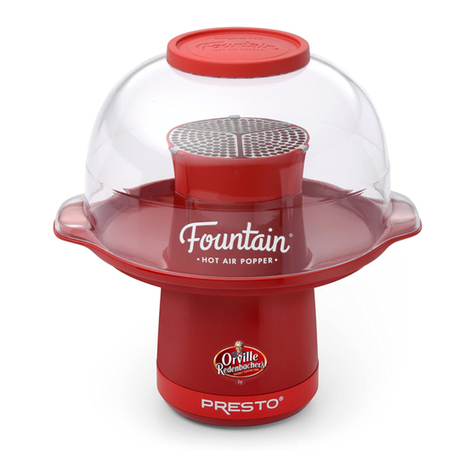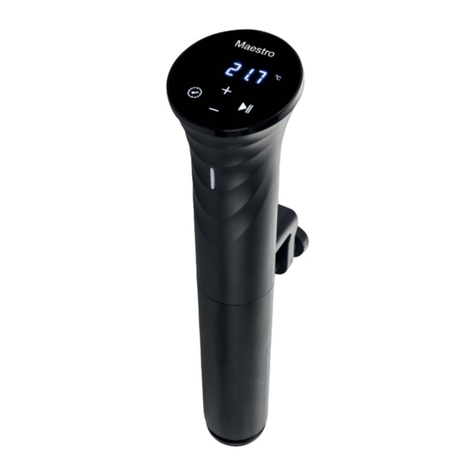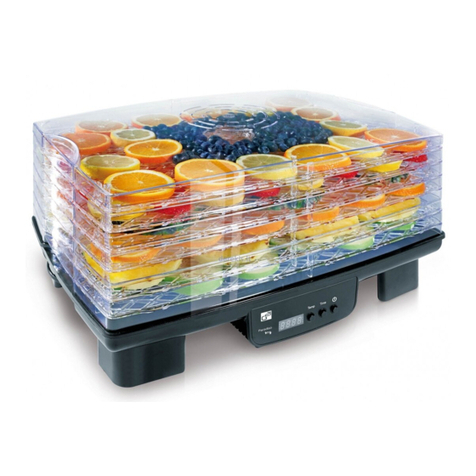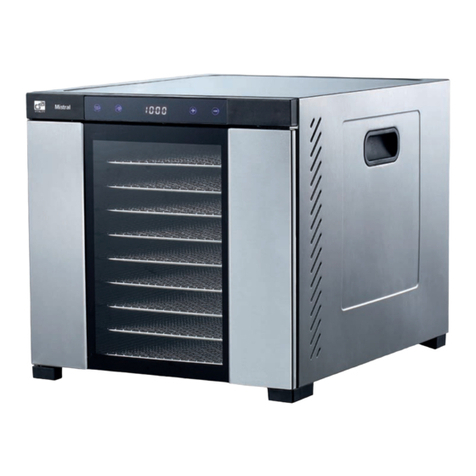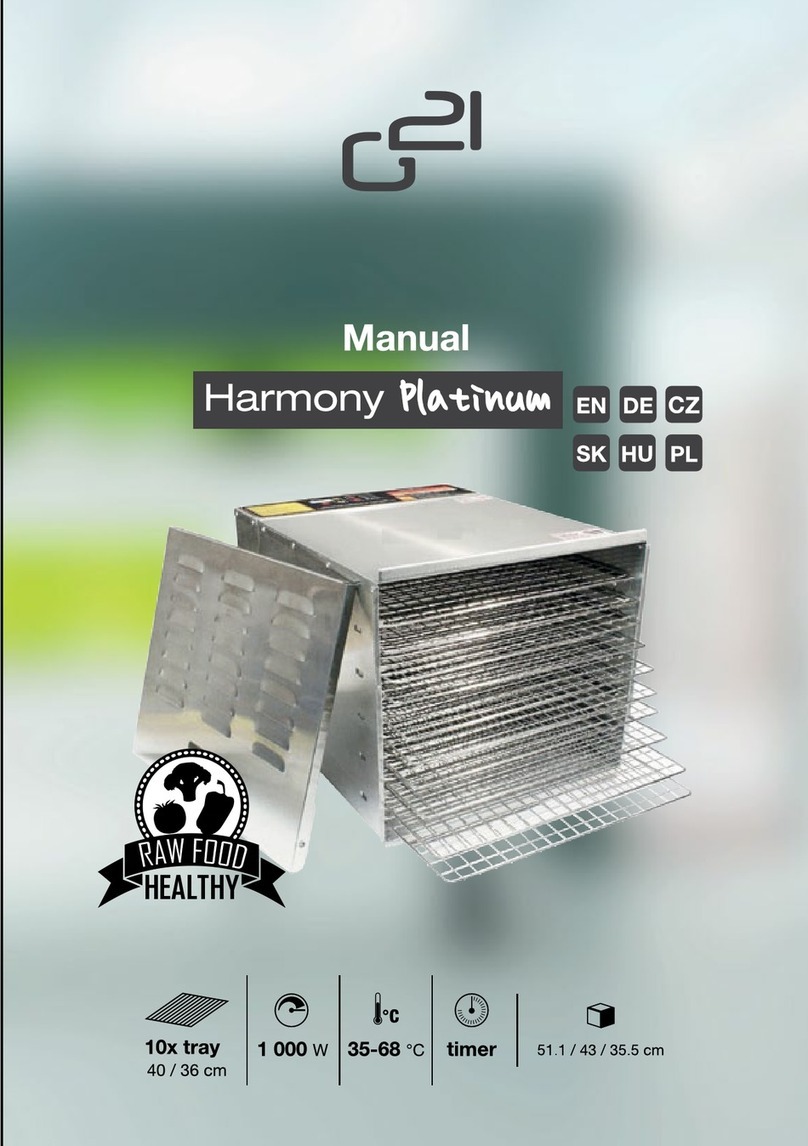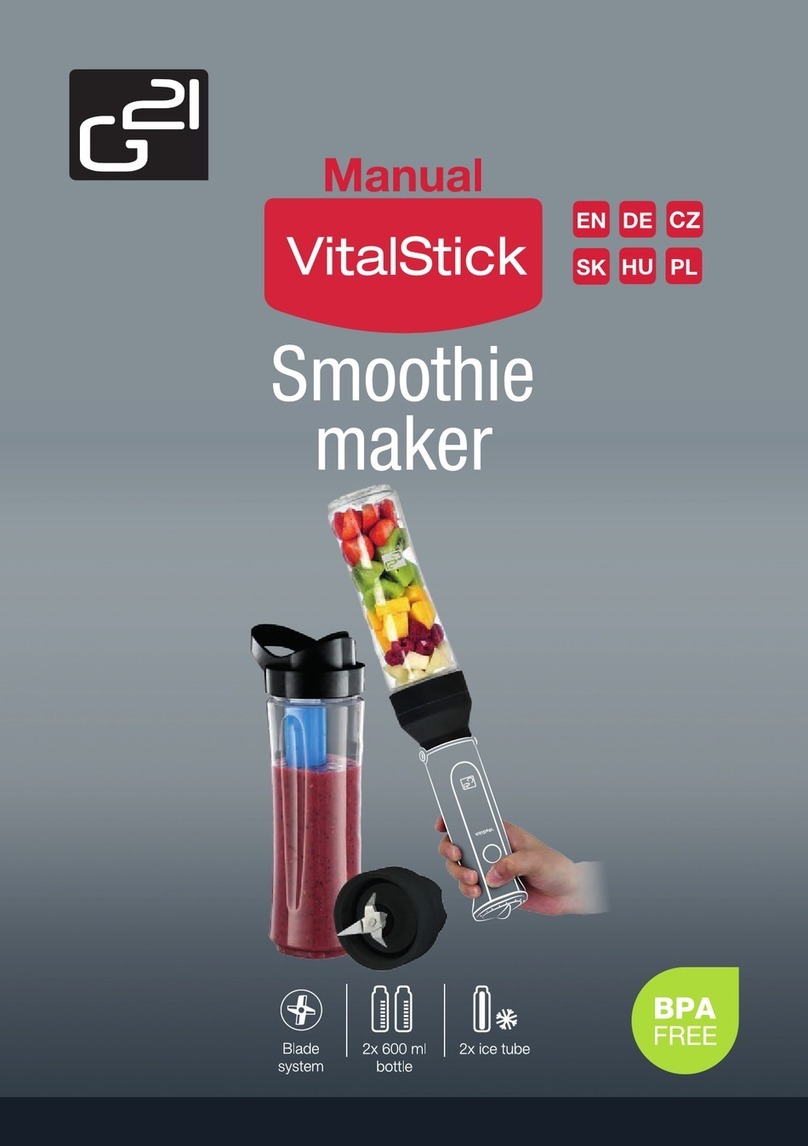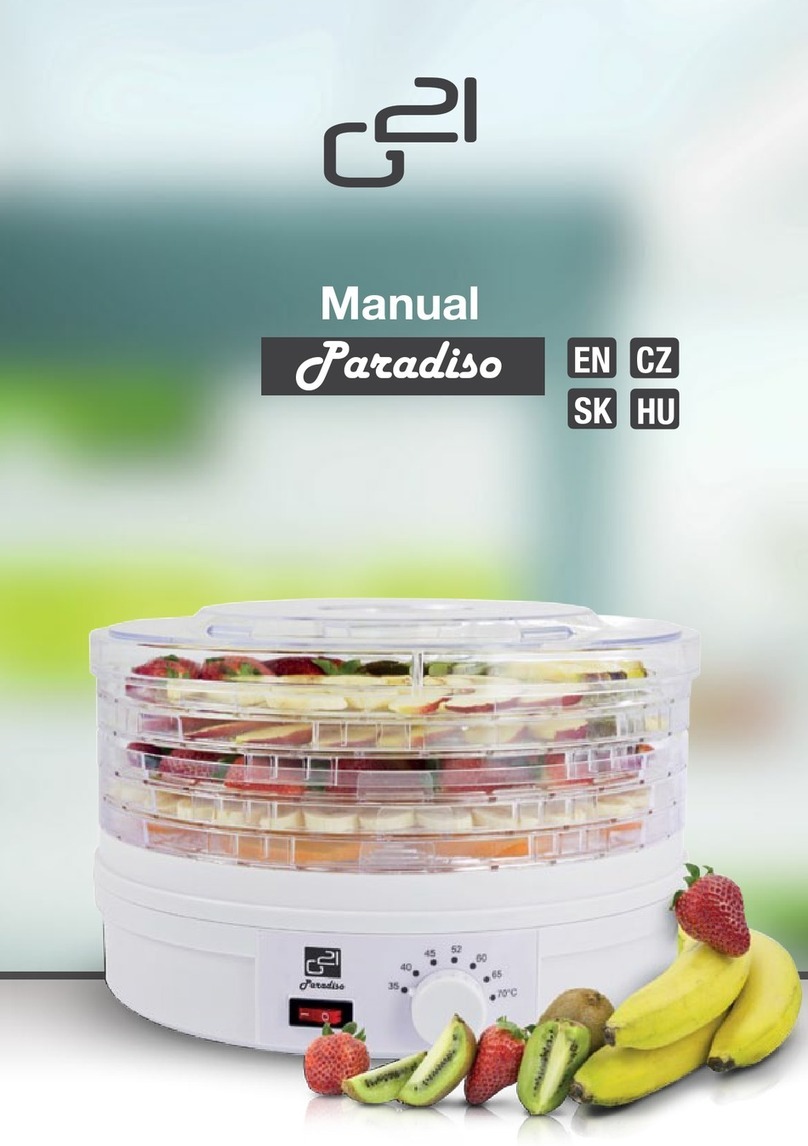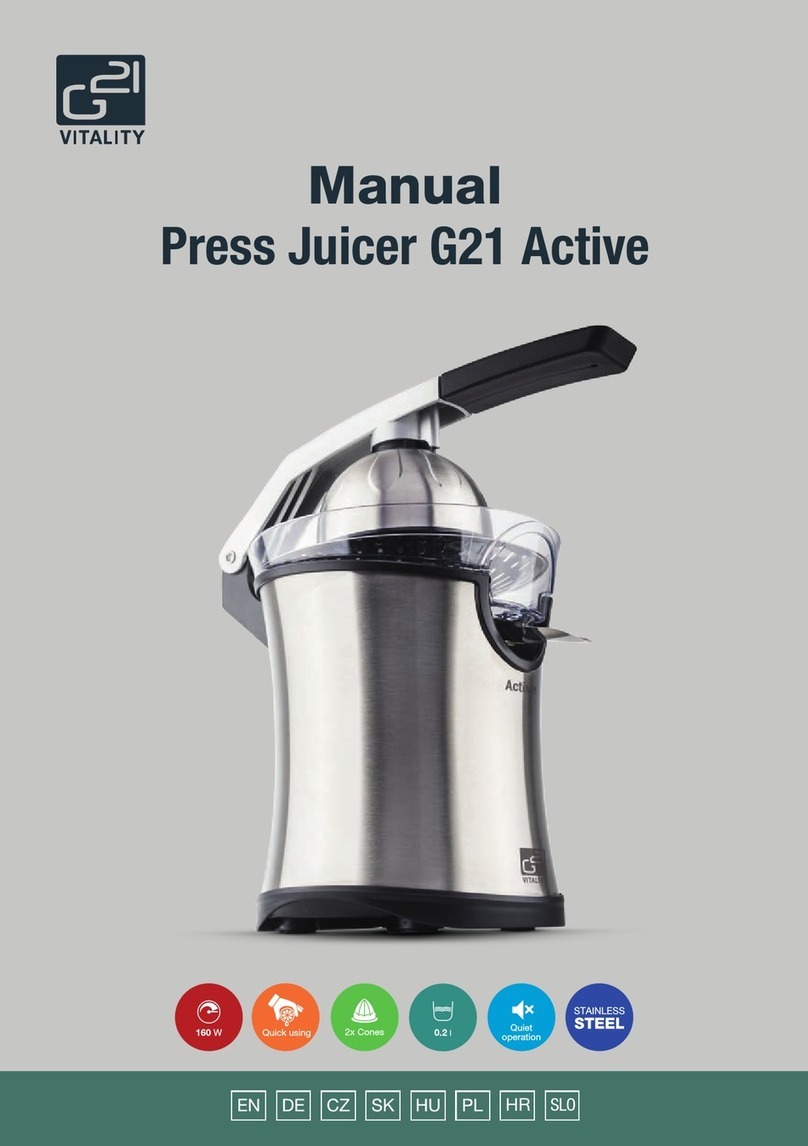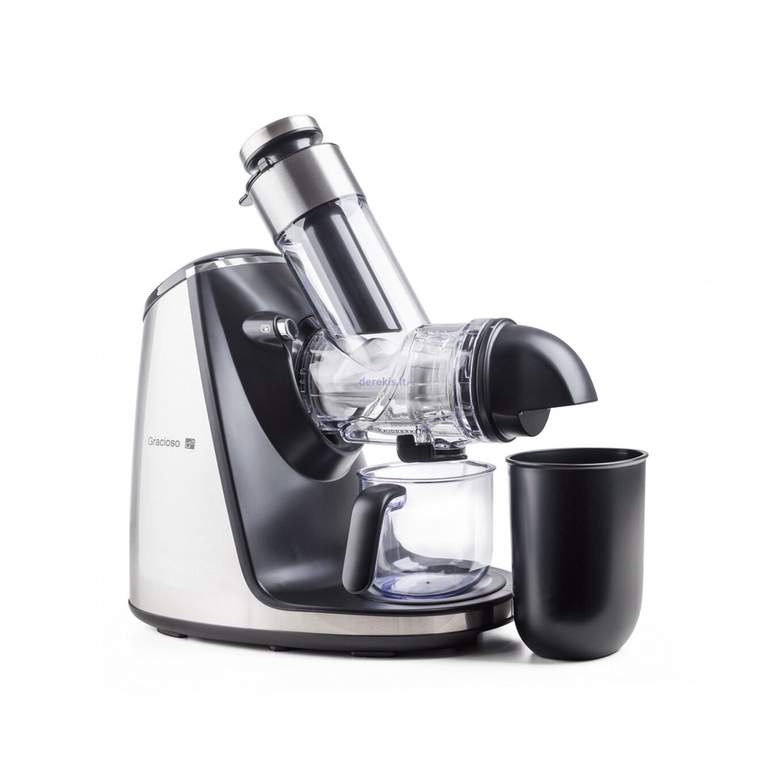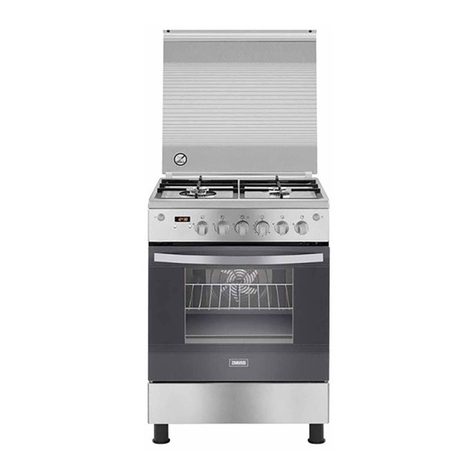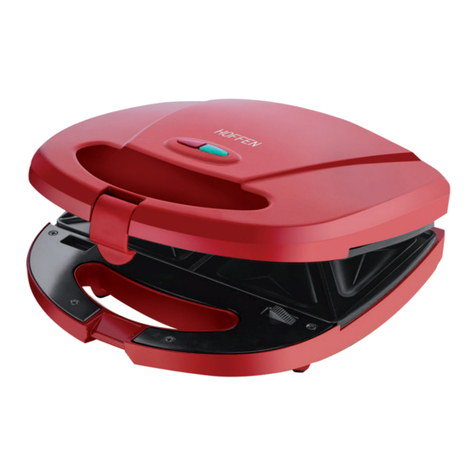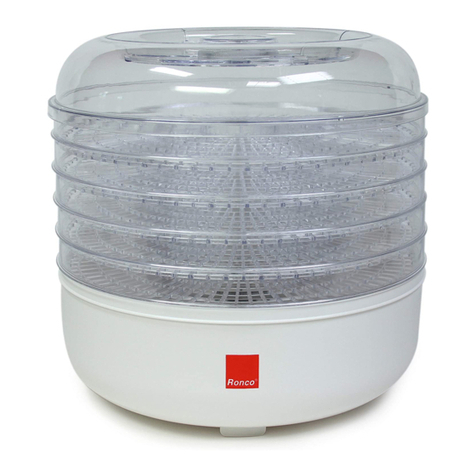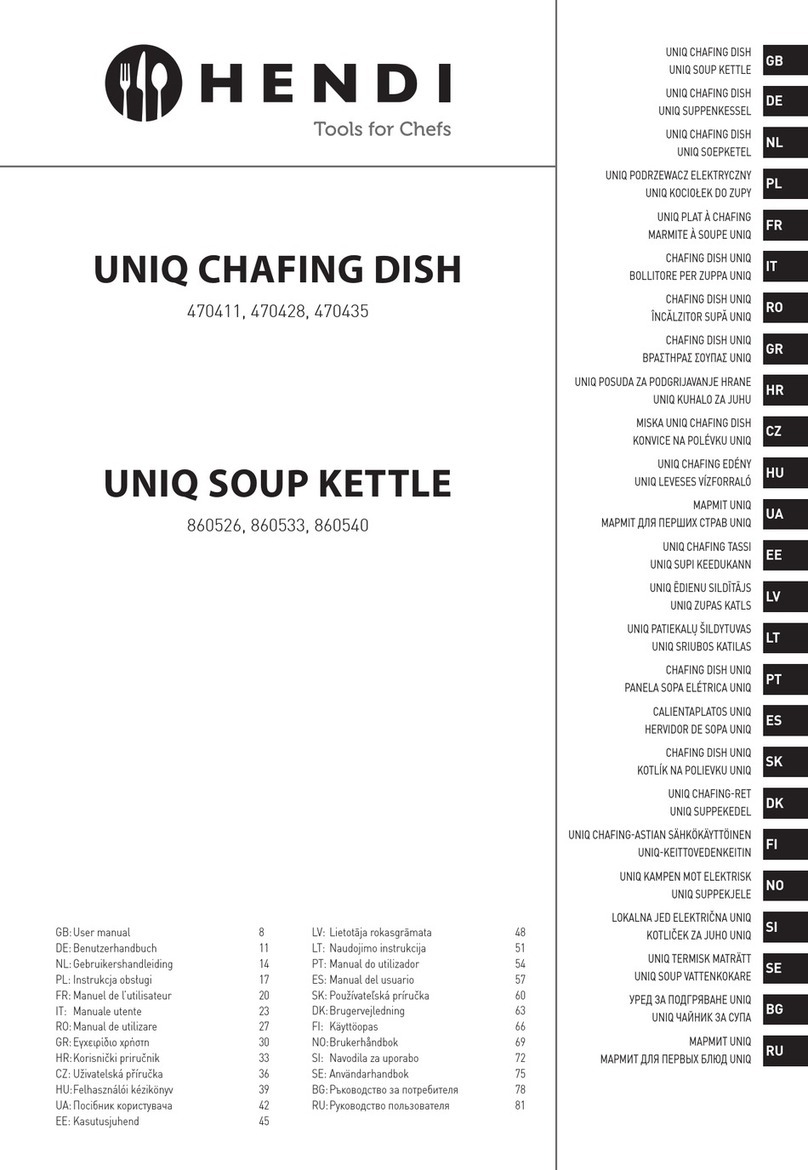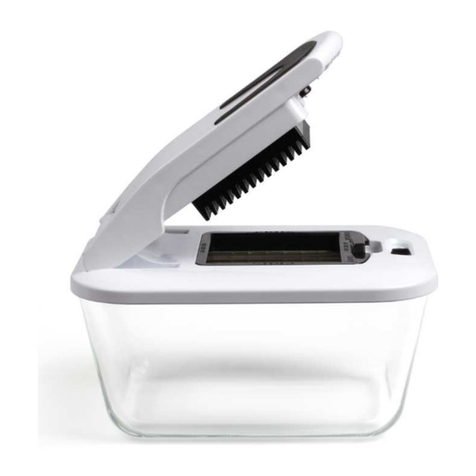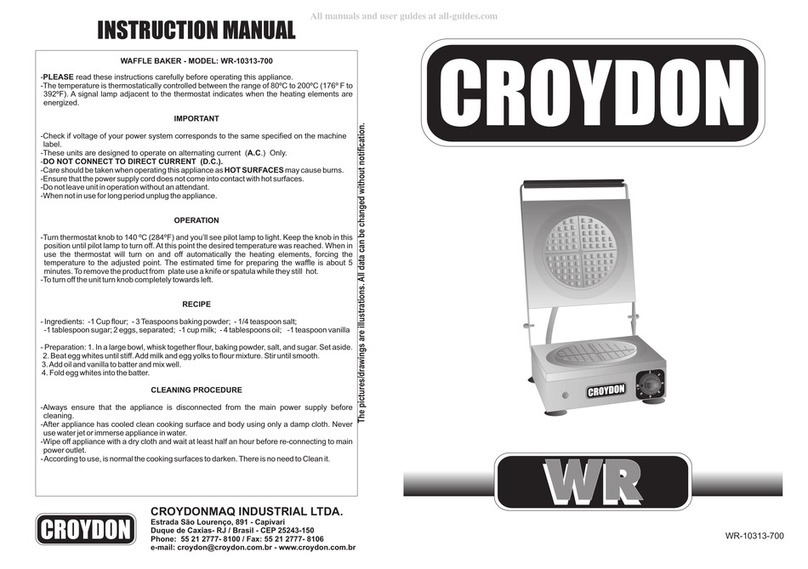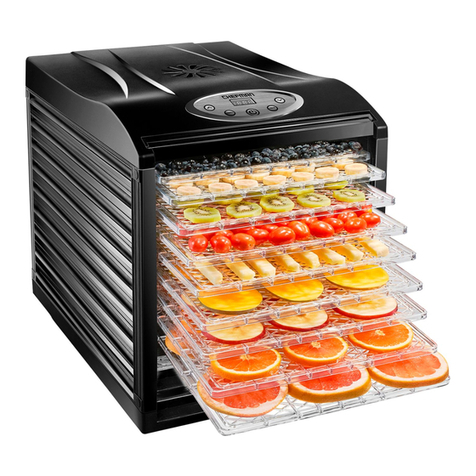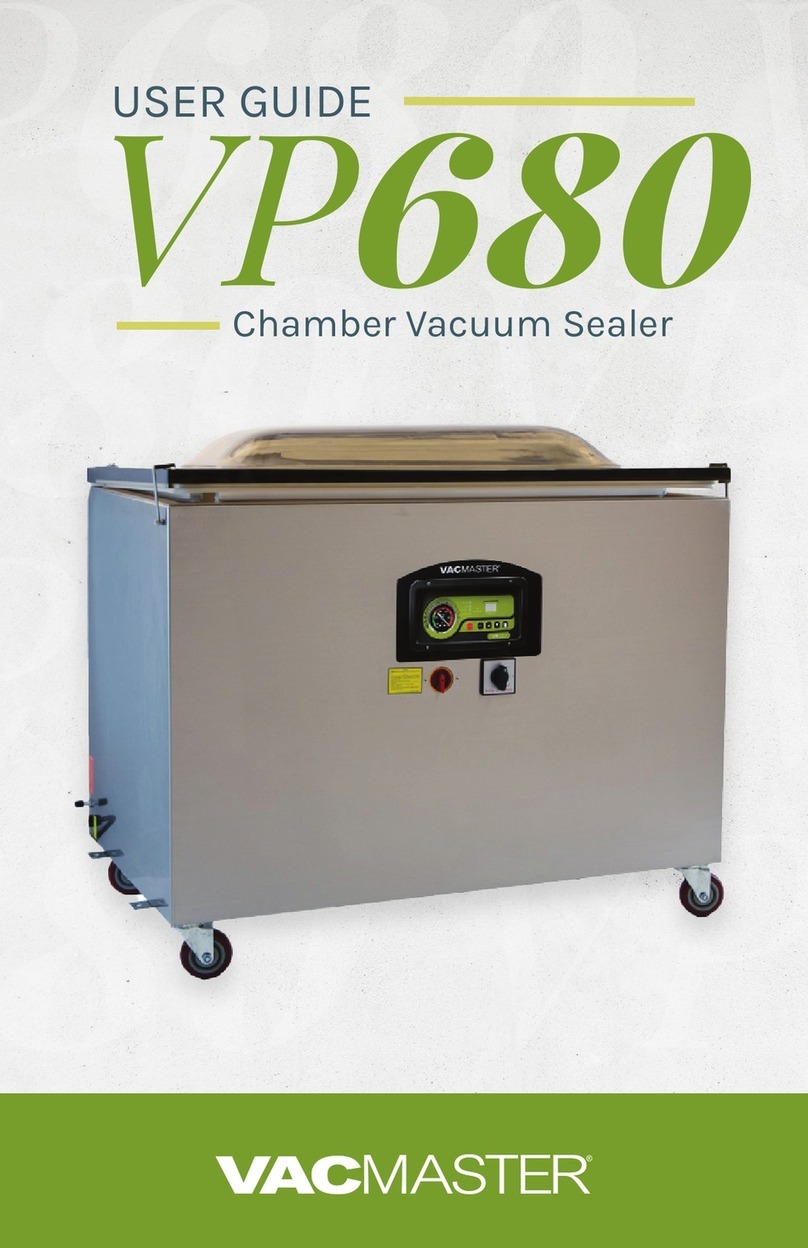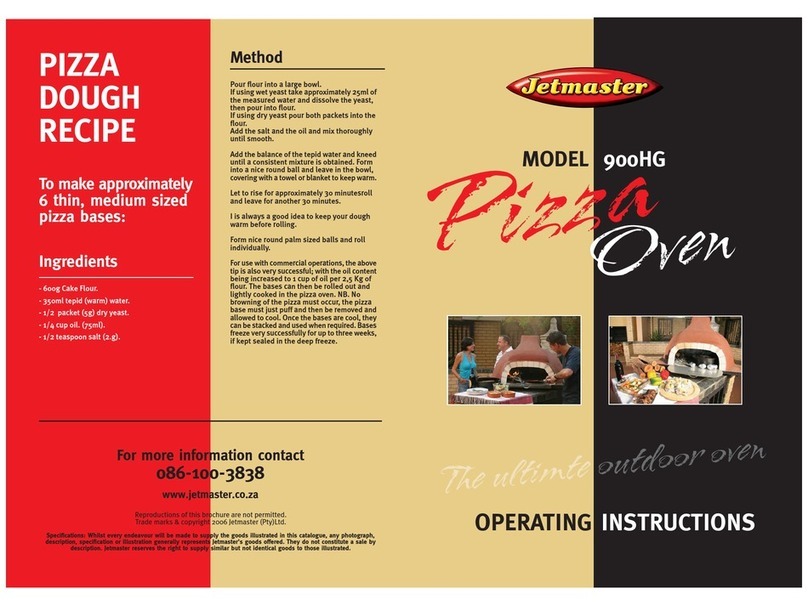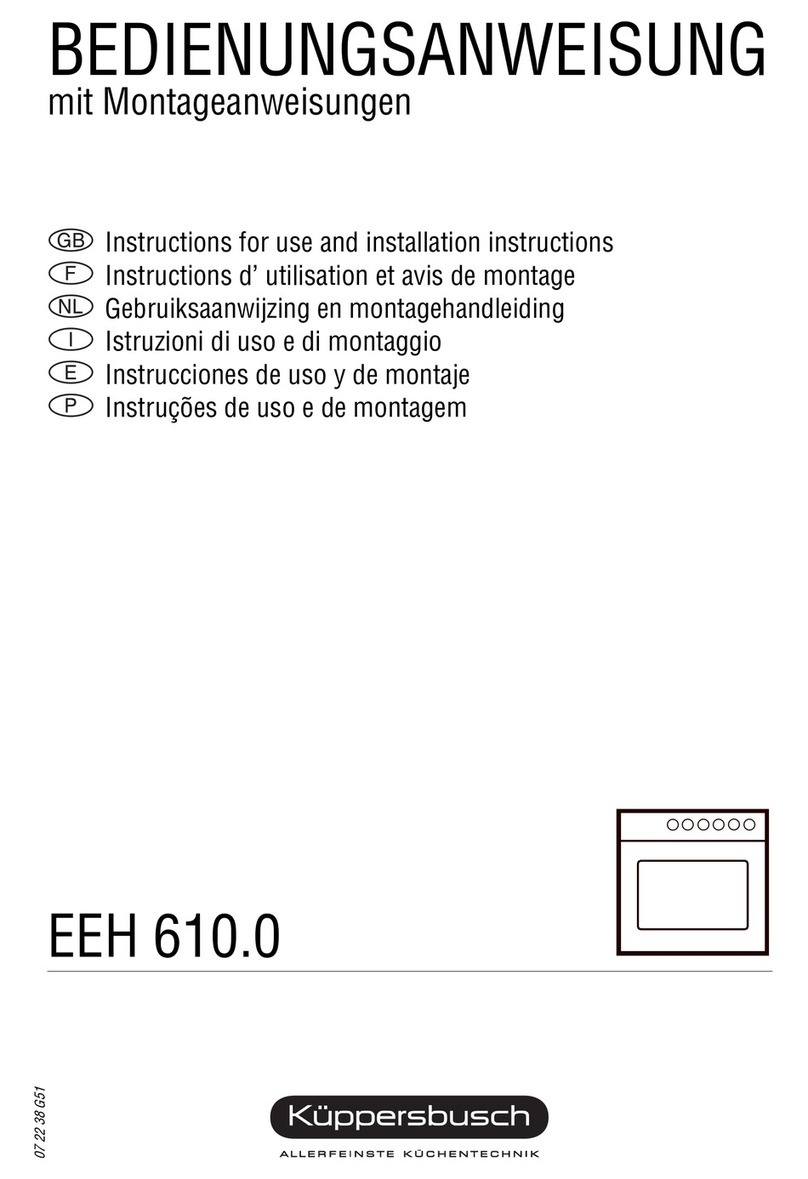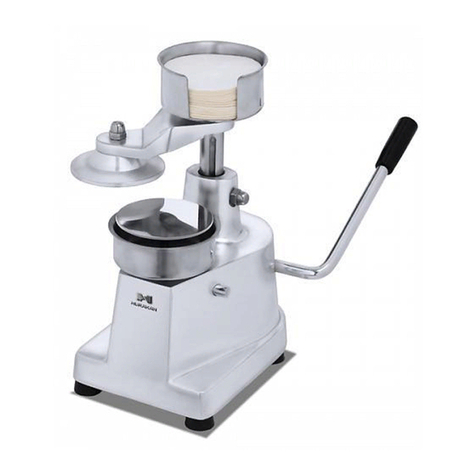
Vegetable dehydration tips
Dried vegetables are every bit as flavourful and versatile as dried fruits. With dried vegetables you
can make delicious soups, stews, casseroles and more. Basically, anywhere you would use fresh
vegetables you can use dehydrated vegetables.
Before preparing and dehydrating your chosen vegetables, always wash them in cold water. A cer-
tain amount of coring, slicing, peeling or shredding is required. A food processor can be a handy
tool when processing vegetables taking seconds to slice up a large batch ready for the dehydrator.
Be creative when drying vegetables. Placing vegetables in diluted lemon juice or similar flavou-
rings for approximately 2 minutes will add a hint of flavour to such vegetables as green beans and
asparagus.
Pre-treatment of vegetables
For the most part, vegetables need little in the way of special treatment for dehydration although
there are some exceptions. Here are some preparation guidelines that will help you get the most
from your dried vegetables.
A few vegetables, such as onions, garlic, peppers, tomatoes and mushrooms can be dried and re-
constituted successfully without pre-treatment. In general if vegetables must be steamed orblan-
ched for freezing they must be treated for drying.
With the above-named exceptions in mind most remaining vegetables will need to be steamed
or blanched before drying. Many vegetables have enzymes that help the food ripen and leaving
these enzymes active in the food will cause them to continue to bring about changes in flavour and
aroma which can be undesirable. Although untreated vegetables which are dehydrated can still be
good for as long as three to four months, heat treated vegetables reconstitute in less time, keep
longer, and generally retain more flavour when reconstituted.
Steaming
Steaming is the best method of pre-treatment. Place a single layer of chopped or slices vegetables
in a colander or steam basket. Shredded vegetables can be ½ inch deep in the colander or basket.
Set vegetables in a pot above a small amount of boiling water and cover. Water should not touch
the vegetables. Begin timing immediately. When ready to remove, vegetables should be barely
tender. Drop in bowl of cold water to stop cooking and for food to retain its color. Pat dry and
spread on trays to dehydrate.
Blanching
Blanching is recommended for green beans, cauliflower, broccoli, asparagus, potatoes and peas.
Since these vegetables are often used in soups or stews, blanching will ensure that they retain
adesirable color. To blanch, place prepared vegetables in a pot of boiling water for 3 to 5 minutes
only. Strain and pat dry and place vegetables in the dehydrator.
Blanching is faster than steaming but many nutrients are lost in the blanching water. It is not re-
commended for chopped or shredded vegetables, which would easily overcook during blanching.
To blanch sliced vegetables, drop the prepared vegetable into a large pot of boiling water. Do not
add more than 1 cup food per quart of boiling water. Begin timing immediately. For timing follow
standard freezing directions. Timing is approximately one-third to one-half that of steaming or until
vegetables are barely tender.




